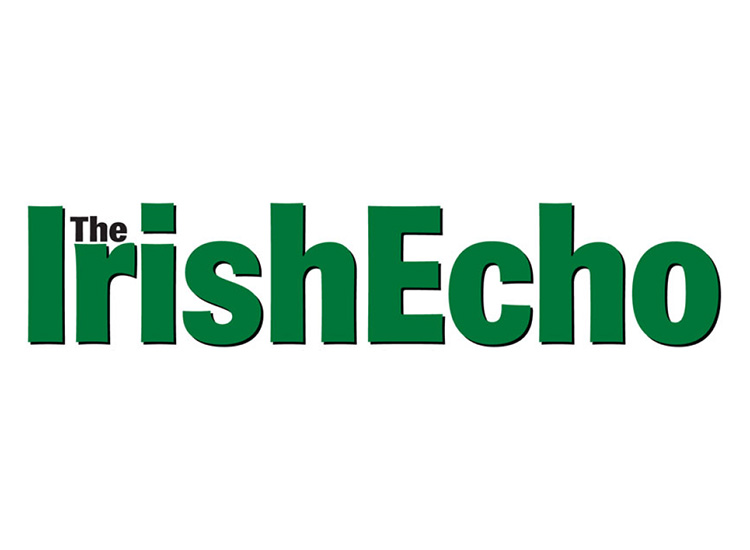JigJam, when located on the northern edge of Lake Michigan, could find a fitting backdrop for their music.
By Colleen Taylor
A band name like JigJam is a selling point in and of itself, but this lively Tullamore group has much more to offer than a catchy nom de plume. Made up of tree young men from Offaly and one Tipperary outlier, JigJam partakes in a musical movement quickly gathering momentum in Ireland: a genre entitled “I-grass” or “celt-grass,” a fresh, Irish-inflected interpretation of American bluegrass. JigJam, along with other bands like We Banjo 3 and the Whileaways, are helping to fortify the transatlantic cultural relationship between Ireland and America, using their traditional music training to fuse Irish folk and bluegrass and reinvent both genres in the process.
What I like about JigJam as an example of celtgrass is how a listener can slowly, yet naturally acclimate to their seamless but unimposing style. One might start out thinking the quartet is pretty good, then gradually wind up playing and replaying toe-tapping, stand-out sets, listening back to hear the skill and energy between each note. It turns out this modest, yet impressive style matches the very character of the bandmates. Last week, JigJam’s Jamie McKeogh and Daithi Melia took time out of their busy transatlantic touring schedule to chat to me about their new, original album, “Phoenix.”
But first, they told me about how they came to be full-time musicians. Like all good bands, JigJam was born out of friendship. Back in 2012, band guitarist and vocalist Jamie McKeogh was asked to play a birthday party and solicited some friends for the task. Quickly the word spread around their hometown of Tullamore, Co. Offaly, and not long after JigJam recorded their debut album in 2014.
Although the band is Tullamore through and through, the States has quickly become a second home. Their first tour was a five-week trip around North America, and over the past five years they have visited 46 states, performing in many of them. Between shows, JigJam might travel between Tuscon and Pittsburgh in a day, traversing the scale and scope of American landscape and culture. The band has even toured in Alaska. McKeogh and Melia reminisced about some of the remote, wild west type villages that have given JigJam a temporary home base during their American travels, such as the remote Nahma, Michigan—a unique small town that represents the band’s fond memories of their early American gigs.
Removed from wifi and located far out on the northern edge of Lake Michigan, the band could find a fitting backdrop for their music. McKeogh and Melia along with bandmates Cathal Guinan and Gavin Strappe were drawn to bluegrass because of its historical links to the Irish diaspora in the 19th century. “When you trace it back,” McKeogh explained, “you’ll find that Irish immigrants influenced bluegrass music.” They quickly began research, listening to the likes of Ricky Skaggs, Billy Strings, Steve Earle, and the Punch Brothers. Since 2012, the band has gotten good enough to even share the stage with some of these legends at festivals. Seeing such bluegrass champions in person, JigJam could intensify their study and improve their own performance style by example.
But nowadays, JigJam isn’t looking back so much as looking forward to inventive revisions of folk music. Reflecting on their traditional Irish music training and their later education in bluegrass, the musicians said: “We want to pull aspects of both genres we like.” Melia described it as “a progressive approach” to these two historical genres—to which McKeogh added, “It’s the only way of keeping these traditions alive. You have to freshen them up and change.” Perhaps unconsciously, the bandmates fittingly described their work like a public service: “It’s up to the likes of us who have the platform to show this change [in genre].”
And thus, “I-grass” was born. Appropriate in its futuristic cadence (like the “iPhone” of bluegrass, Melia joked), the new term signals the fresh approach of JigJam and explains their unique crossover to American audiences. Last year, JigJam branded a unique sound all their own by recording a complete studio album of original music. This fourth record, entitled “Phoenix,” is an homage or “tip of the hat” to the band’s hometown of Tullamore and captures the emotive experience of being consistently on the road, far from home. Nevertheless, Melia and McKeogh emphasized their luck in enjoying touring so much—a challenging endeavor to devote the majority of your year.
“Phoenix” marks a creative milestone stone for JigJam. “We have finally developed our own sound and our own style,” McKeogh explained. Playing so many gigs on the road allowed the band to perfect their synchronicity: “we now know what works with us, what type of sets, we’ve learned the grooves that get people dancing at festivals,” McKeogh added.
One particular crowd favorite from the new album is “Big Grey Dog,” a jaunty, narrative tune about the band’s first, naïve and colorful trip on a Greyhound bus, when, with few dollars left to the tour fund, they traveled from Las Vegas to Indianapolis. American audiences always respond with laughter to this tourist nightmare, and JigJam’s sense of humor makes for a classic bluegrass romp. “Where I Belong” and “Sail Away” offer more tender reflections on traveling, the grind of flights across the Atlantic, leaving loved ones and loved places behind. “Where I Belong,” in particular, involves a very captivating melody.
Some of my favorites from JigJam’s “Phoenix” are their rapid-fire tunes, such as “June Apple” and “Red Paddy on the Ridge.” “Tullamore to Boston” is potentially the most interesting, stylistically: a complex, chemical compound of Irish folk song and bluegrass banjo tune, with a chorus that sounds more like Irish-American rock. It puts the tropes of 19th-century Irish folk songs—such as mapping the landscape from the River Shannon to “Americay”—in contradistinction with modern touches that gesture to the likes of American folk rock band the Lumineers. This conglomerate reflects the band’s crystallizing style and their diverse influences, which range from bluegrass legend Bill Munroe to Bruce Springsteen and the Eagles, or, geographically, from Tullamore to towns like Nahma, Mich.
As American crowds and festivals keep demanding JigJam’s return, the band is looking ahead to its next chapter by focusing on their fans. “The goal is get people to come hear you because you’re you, not just because there is a gig on,” McKeogh detailed. What will make JigJam stand out for potential followers is their two-fold creativity: both modern, musical epistles to Ireland in modern bluegrass packaging and reinventions of traditional Irish tunes like “The Mermaid” with American folk rhythms. This is a band that has plenty to offer fans on both sides of the Atlantic. After wrapping up their first tour in Germany this past month, JigJam now looks forward to their next American tour, which will involve gigs in Boston, the state of Maine and, of course, New York, as well as cities all over the country.
You can jam out with JigJam on Thursday, Feb. 27 at Symphony Space in New York City. New Englanders can catch them at a formidable Irish music venue, Boston’s the Burren, on Wednesday, Feb. 26th. They are also in Saratoga Springs, Piermont, N.Y., and Northampton, Mass., on Feb. 22, Feb. 23 and Feb. 25, respectively. More information and tickets at: jigjam.ie.









